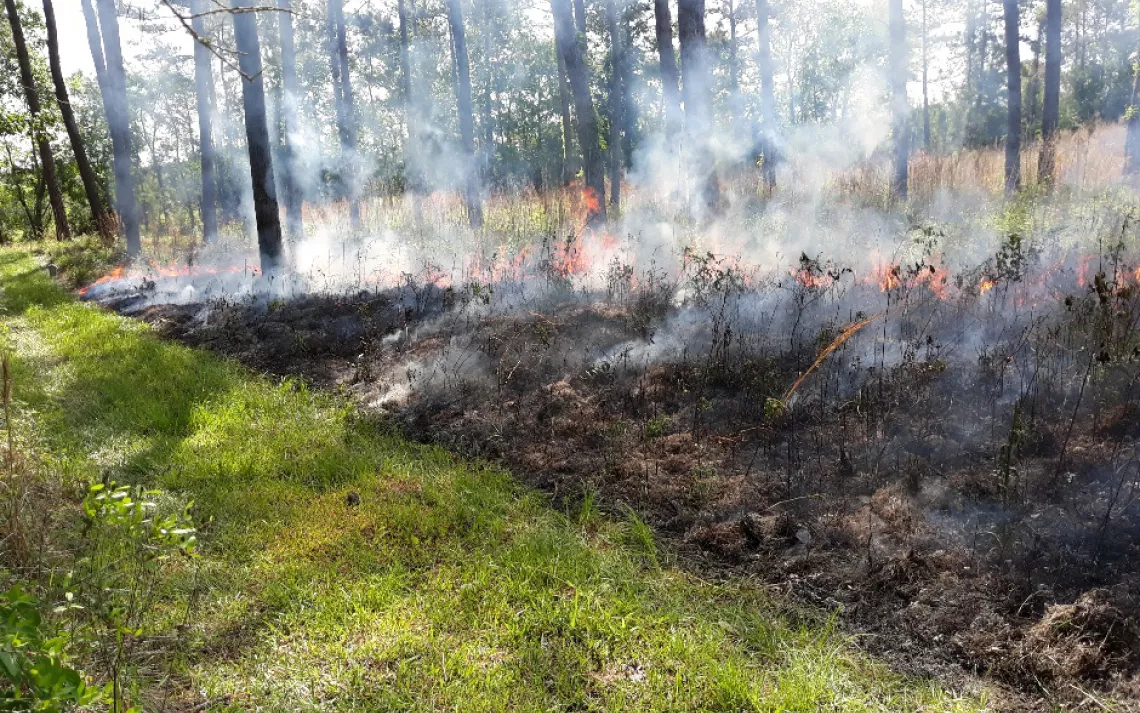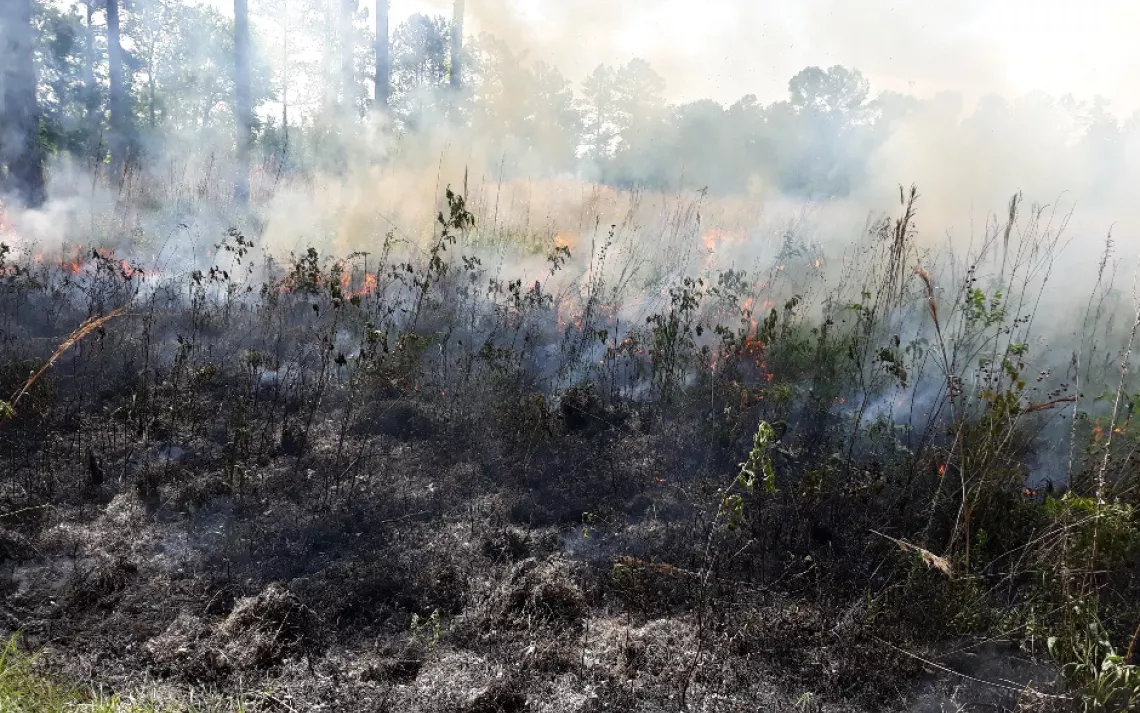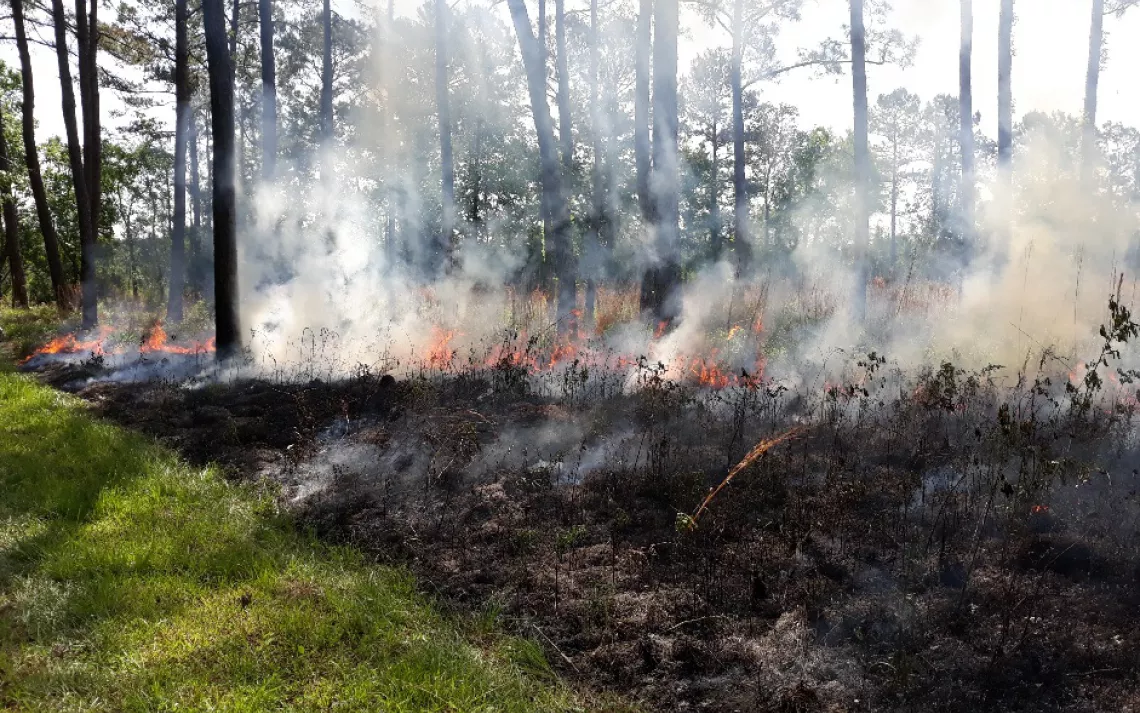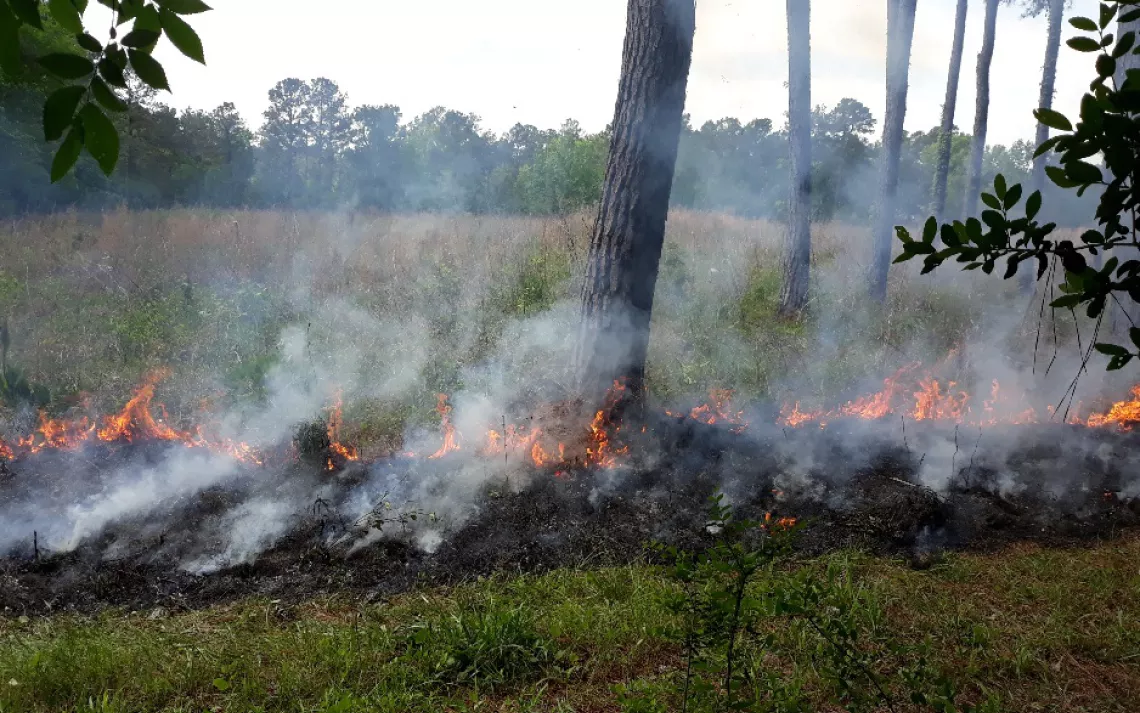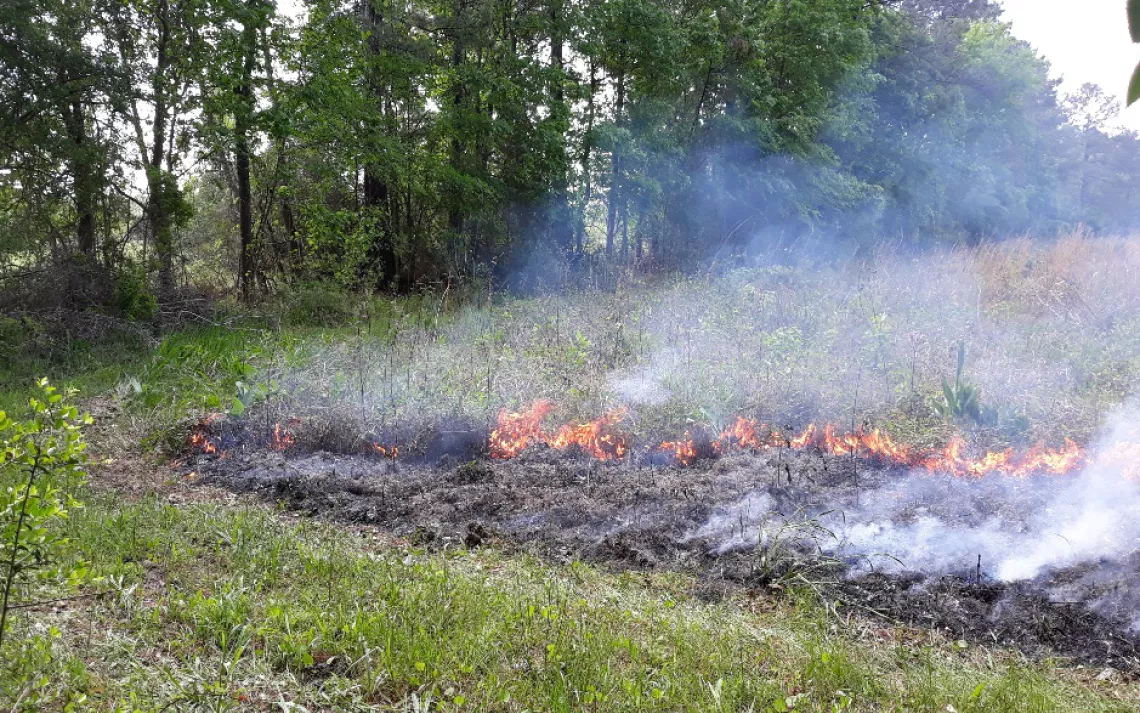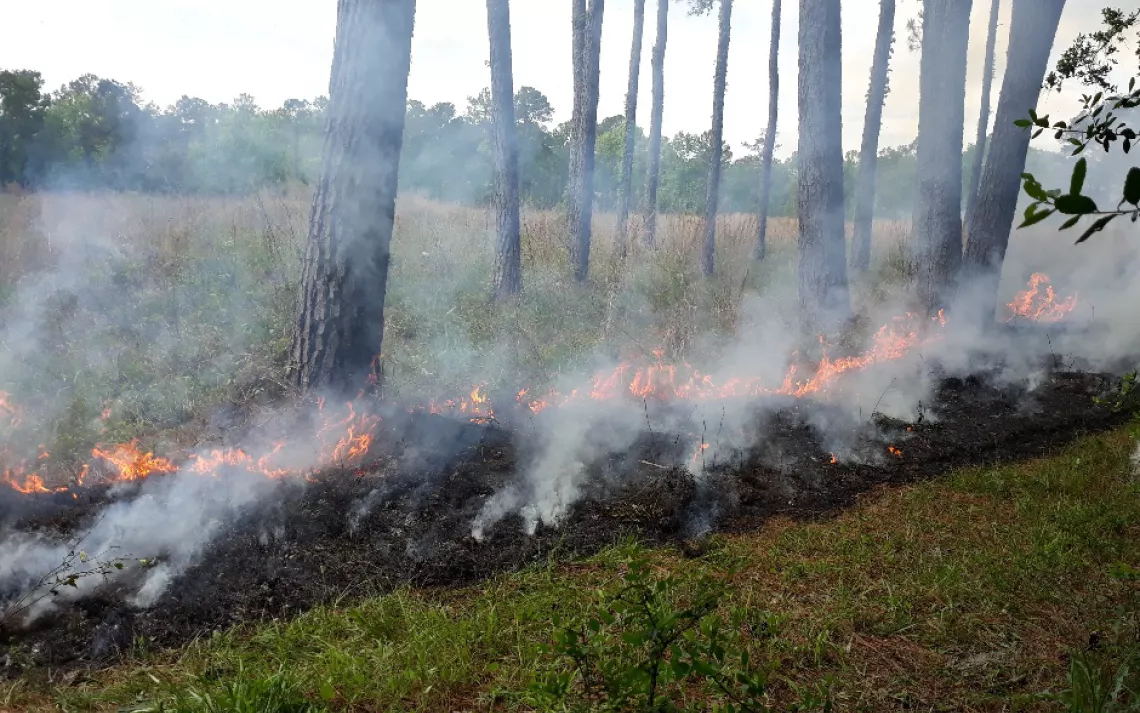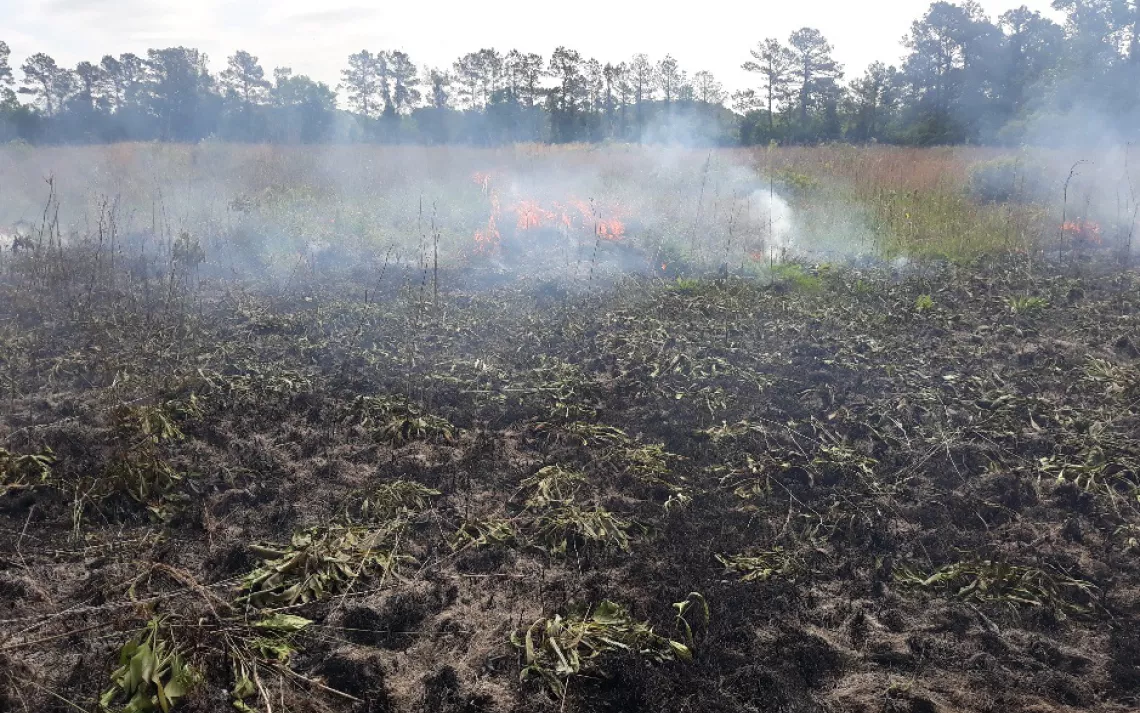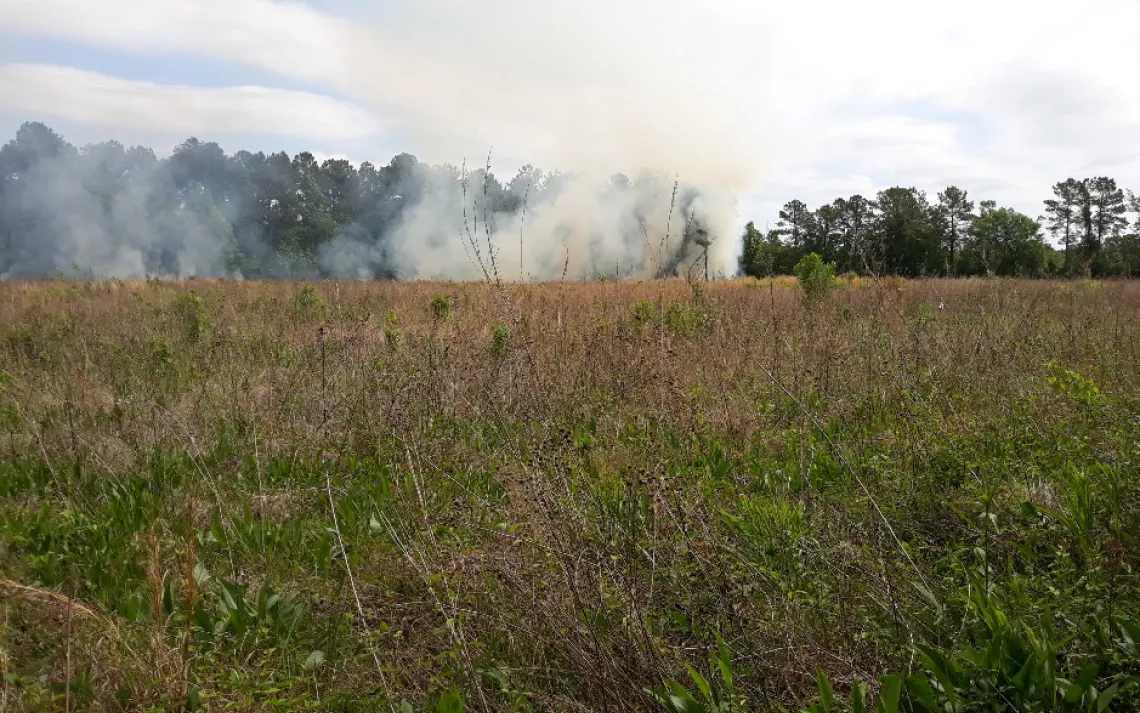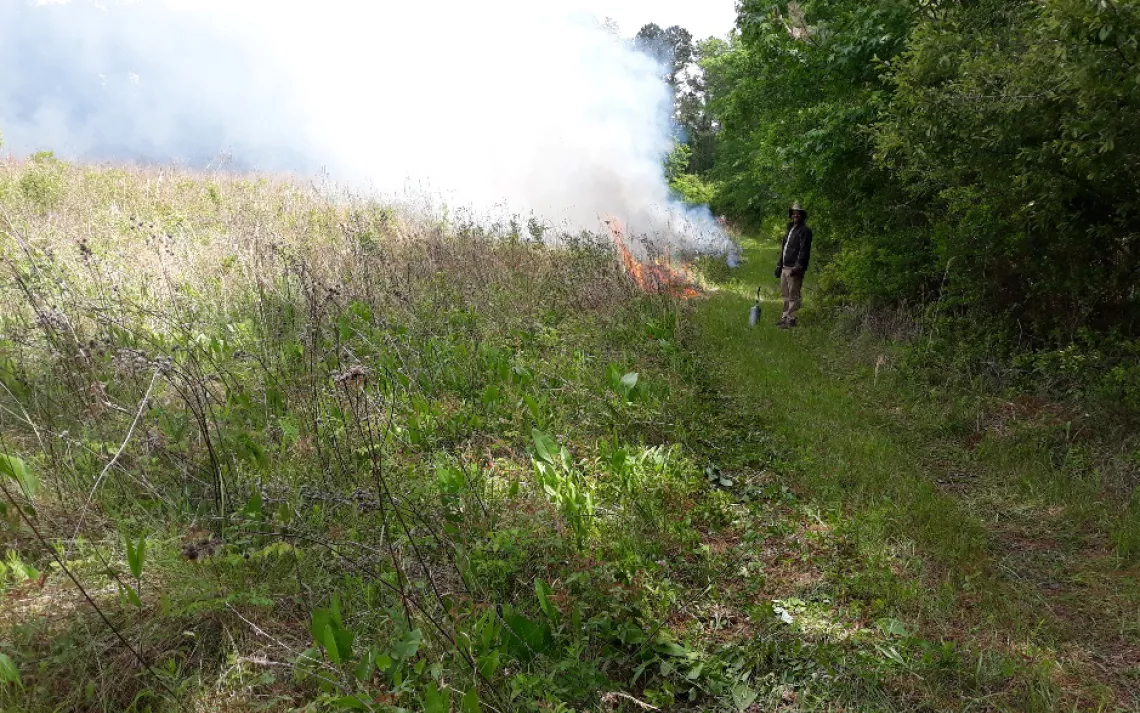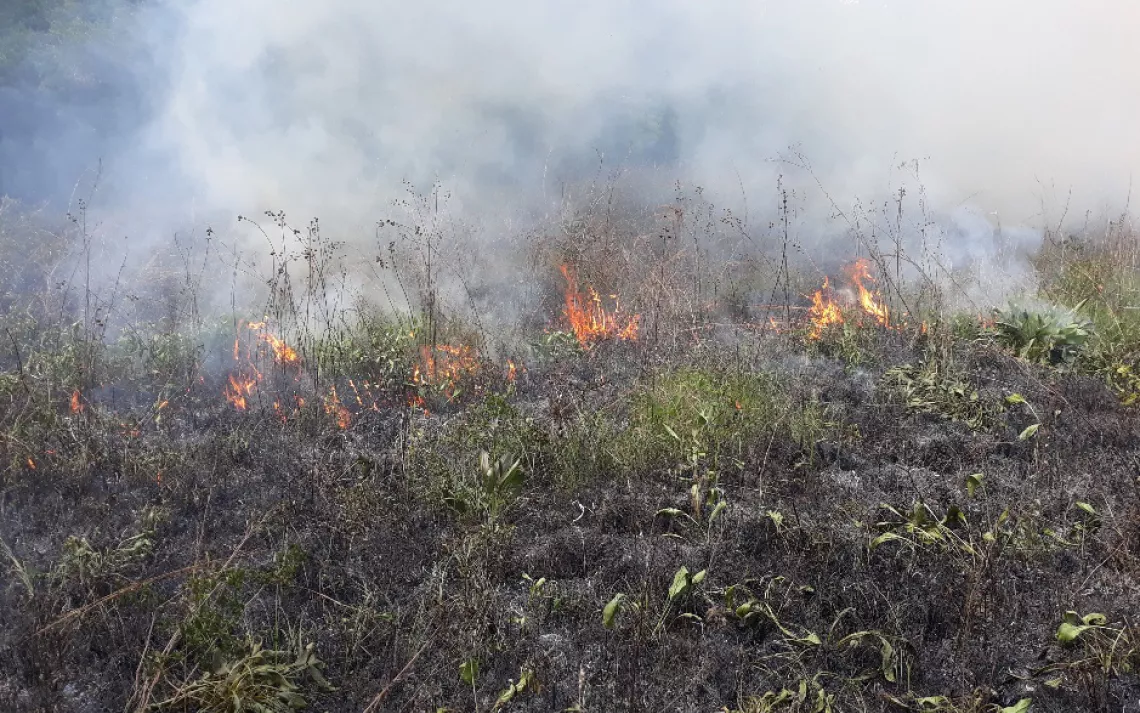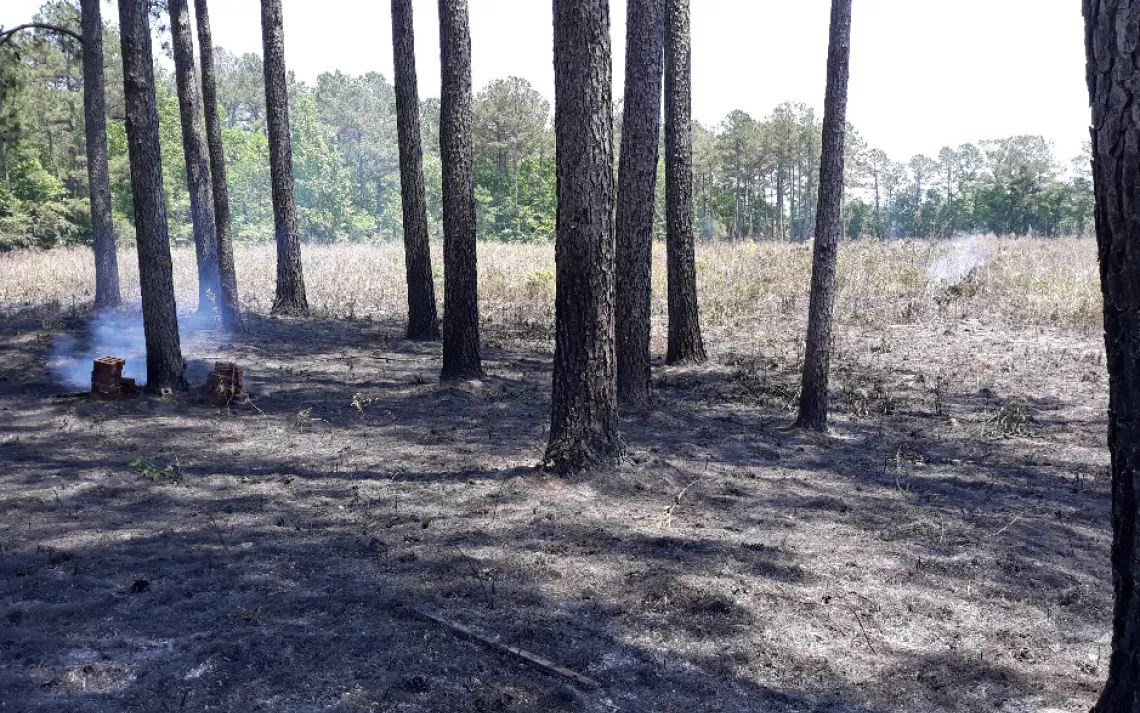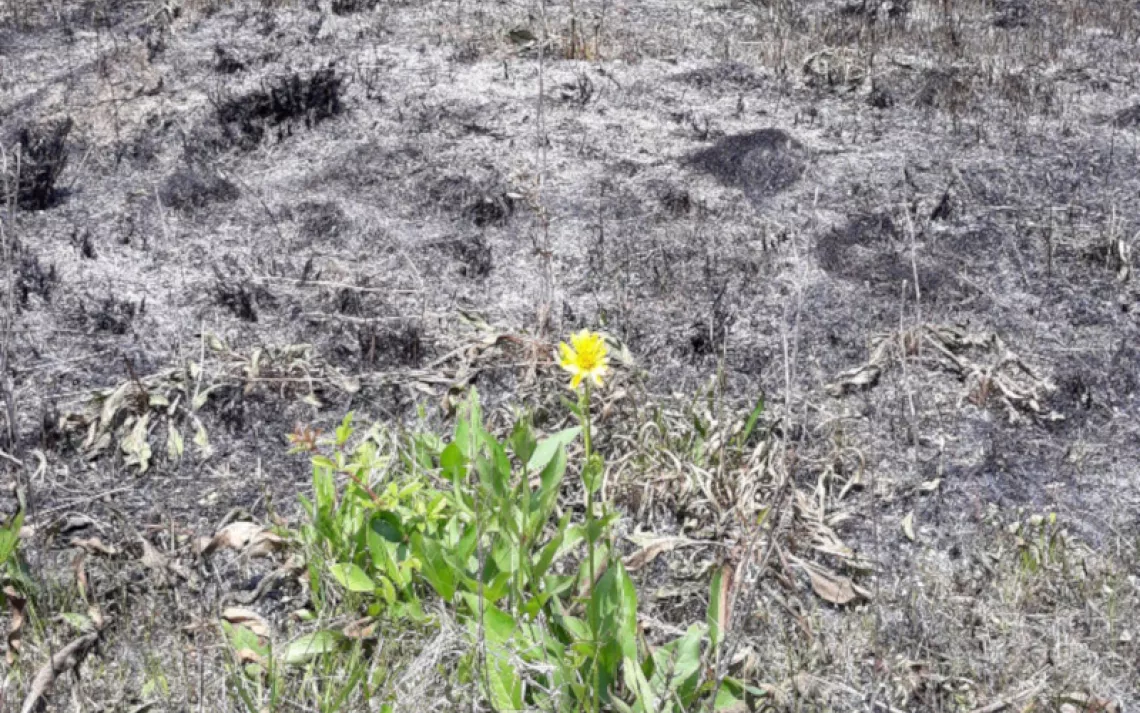By Brandt Mannchen
I can think of no better way to spend Earth Day than to watch and photograph prairie restoration in action, via a prescribed burn on Marysee Prairie. So that is what I did!
It had been far too long since Marysee had burned, five, long, years. Usually, a tallgrass coastal prairie burns every-one to three years. Due to a variety of reasons, mostly liability insurance concerns, the Texas Land Conservancy (TLC), owner of Marysee Prairie, had not been able to burn. But that issue was resolved, and money was in the 2021 budget for a burn, so here we were!
TLC contracted Raven Environmental Services, in Huntsville, Texas, to do the job. The three-person crew, Kevin, Matthew, and Hunter, all very friendly folks, were busy unloading their equipment when I drove up. They had a truck-trailer with a small bulldozer and a truck-trailer with a water tank which hauled two all-terrain vehicles (ATVs) that also had water tanks. Ellen, Ellen, Naomi, and David had all come, as volunteers and leaders in TCL, to see the burning of Marysee Prairie.
Hunter drove the perimeter of Marysee Prairie, on the permanently established fire-lanes, to compact the vegetation and soil which makes fire escape from the prairie difficult. Marysee Prairie is almost 10 acres and has a 3-acre wooded buffer on the north. It’s fenced on all four sides and has Liberty County Road 2077 on its west side, pastures on the north and east sides, and a residence on its’ south side. All the neighbors had been notified and a curious group stood down the road watching.
I took a brief look around Marysee and saw a number of wildflowers including: white clover, corn salad, coreopsis, lyre-leaf sage, bull thistle, Texas dandelion, Simpson rosin weed, white-topped sedge, wine cup, wild onion, pale lobelia, self-heal, Mexican primrose, blue-eyed grass, and several others.
Within about 15 minutes, Kevin started a test burn to see how the thatch and dried grass burned. It flamed well and before you knew it, with walkie talkies going and the wind blowing in an east-southeast to southeast direction, the burn began.
A backburn was started on the north side of Marysee, and it burned eagerly against the low wind. ATVs patrolled where the backburn was lit and made sure that any fingers of fire that burned beyond the prairie edge into fire lanes were put out via flappers or boots.
The fire gained speed and burned more fiercely as it backed against the wind and hit concentrations of dried grass and wildflowers from last year. The heat created by the prescribed burn was surprisingly harsh and I made sure I stayed far enough away so that I was not uncomfortably close.
All the while, I took photos as the fire burned and the two small groves of pine trees, one on the west side and one on the northeast side, burned ferociously as pine needles with resin turned into flames and smoke. At times, the smoke was thick enough that you could not see the fire lanes. Needless to say, I did not want to breathe any more smoke than I had to and kept my distance as best I could from the rolling, white, clouds.
After the backfire burned out into the prairie, and the north, west, and east sides were alight, then the head-fire, moving with the wind, was lit on the south and east. The fire moved out into the middle of Marysee like a wave rolls onto the shore and ran mostly east. The smoke increased but there were no embers and little ash on this low windspeed day.
Before you knew it the fire had burned most of Marysee. Patches that had not burned were lit on fire. Not all patches burned or burned evenly since small changes in moisture and topography on Marysee made a difference in what burned and how it burned. You could hear the Yaupon Holly and Southern Wax Myrtle sizzle as the fire burned their branches as it raced by.
Smoldering areas were put out to reduce smoke and to keep the fire from reigniting. All in all, the burn took about two hours and as we walked and talked about the fire we saw a hawk circle over Marysee looking for lunch.
It was a good day and although some areas didn’t burn that I wished had, we reintroduced fire into Marysee Prairie after too long a time of mowing and brush growing.
It was good to have the natural fire process back on Marysee Prairie. In the coming weeks and months, we will see how fire adapted grasses and wildflowers sprout, take over, and bloom on Marysee again. That too will be a day I will be glad to see!
